Exporting images from Lightroom Classic CC is a crucial step after editing. Whether you're preparing your photos for social media or simply sharing them with friends and family, Lightroom's export dialog offers a variety of options to help you prepare your images optimally. In this guide, I'll show you how to efficiently export images and which settings you can use for it.
Key takeaways:
- You can export multiple images simultaneously.
- The choice of file format and quality influences the final file size.
- You can add custom file names and metadata.
- Lightroom allows you to create export presets for repeated use.
Step-by-Step Guide
To export an image from Lightroom, start by selecting the image or images you want to export. You can do this either individually or by using keyboard shortcuts like Ctrl + A for all images.

Once the desired images are selected, right-click on the image and choose "Export" and then "Export" again.
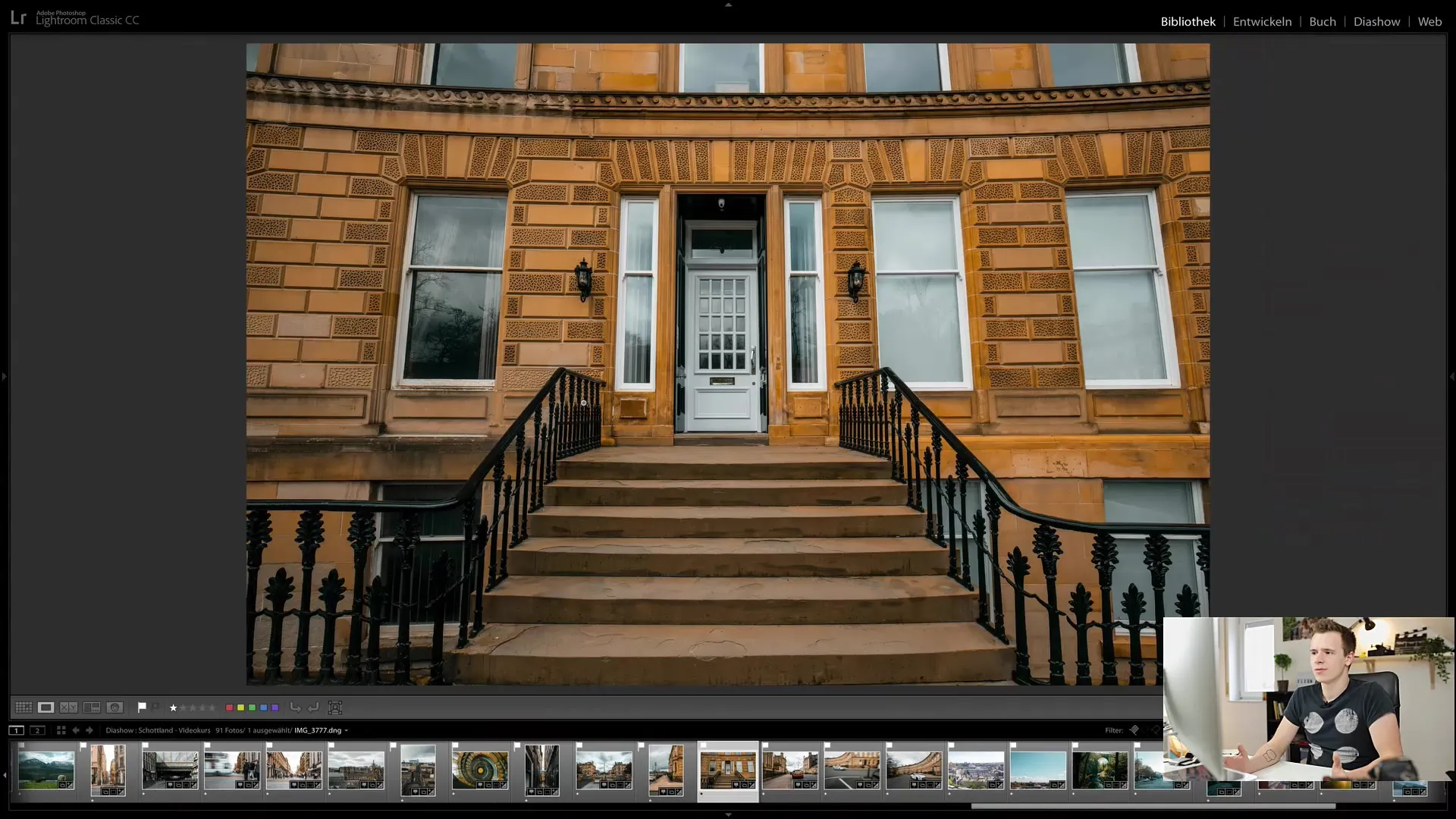
The export dialog box will open, showing you various settings you can adjust. First, you should decide where the exported images should be saved. You have the option to save the images on your desktop or in a specific folder.
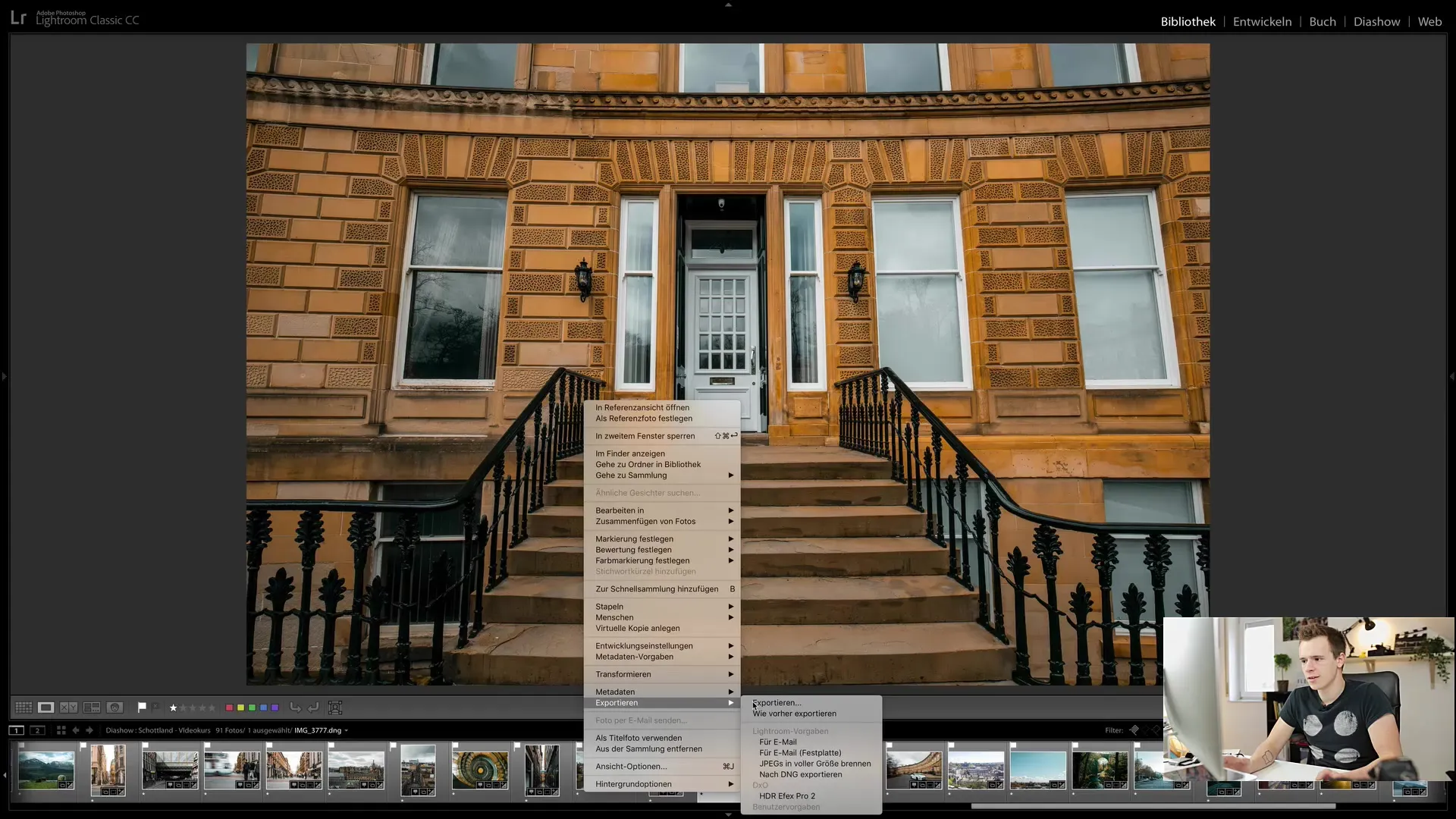
In the export dialog box, for example, you can choose the desktop and create a specific folder for your Scotland images. Add a file name so you can easily find the images later.
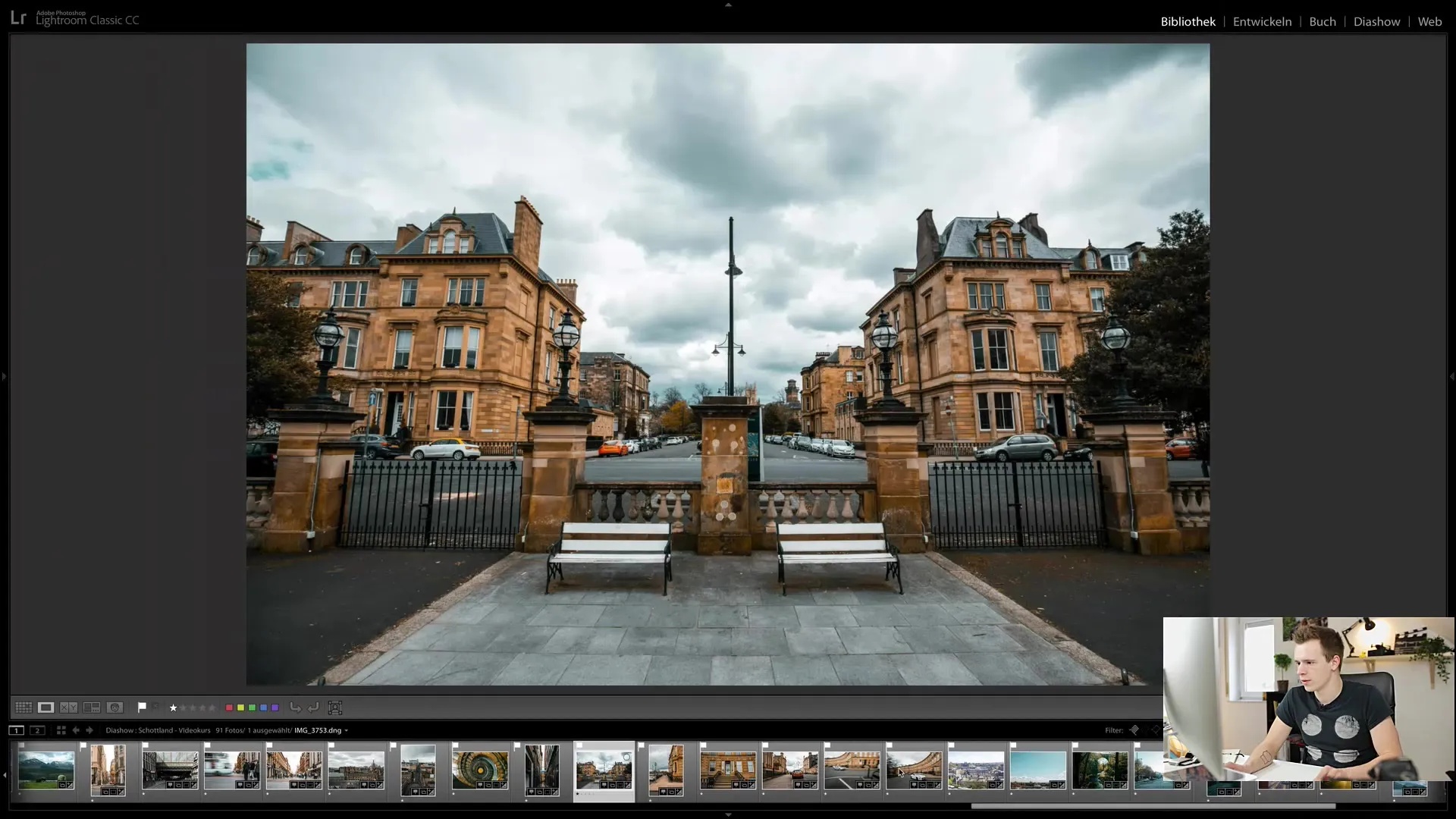
A useful option is to rename the images. Here you can select a custom file name and use templates like date and time to systematically organize your images. For example, you could choose "Scotland_PhotoTrip_Date_Time" as the file name.
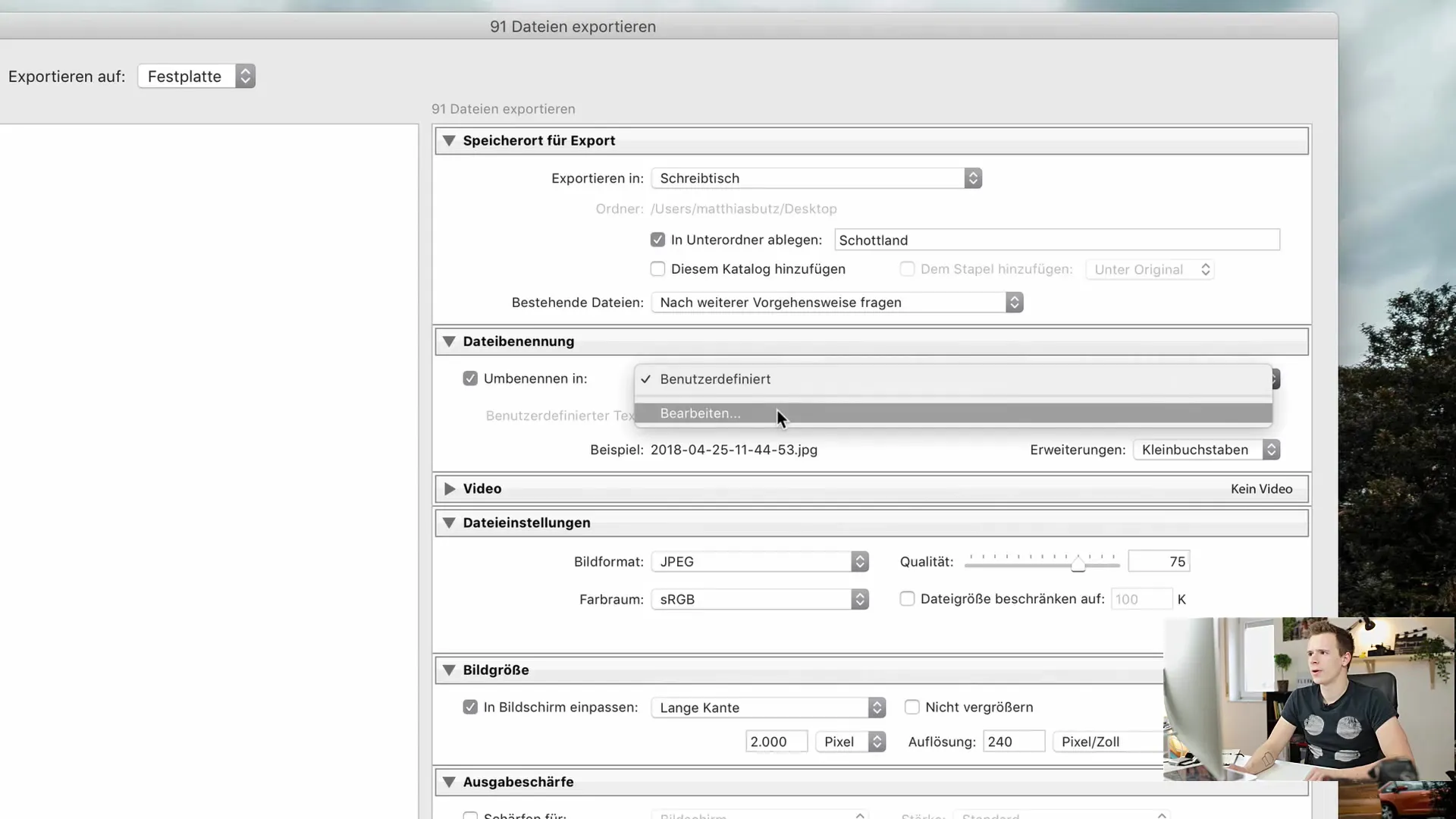
If you wish, you can also integrate image numbers or other specific information into the file name to clearly differentiate the images.
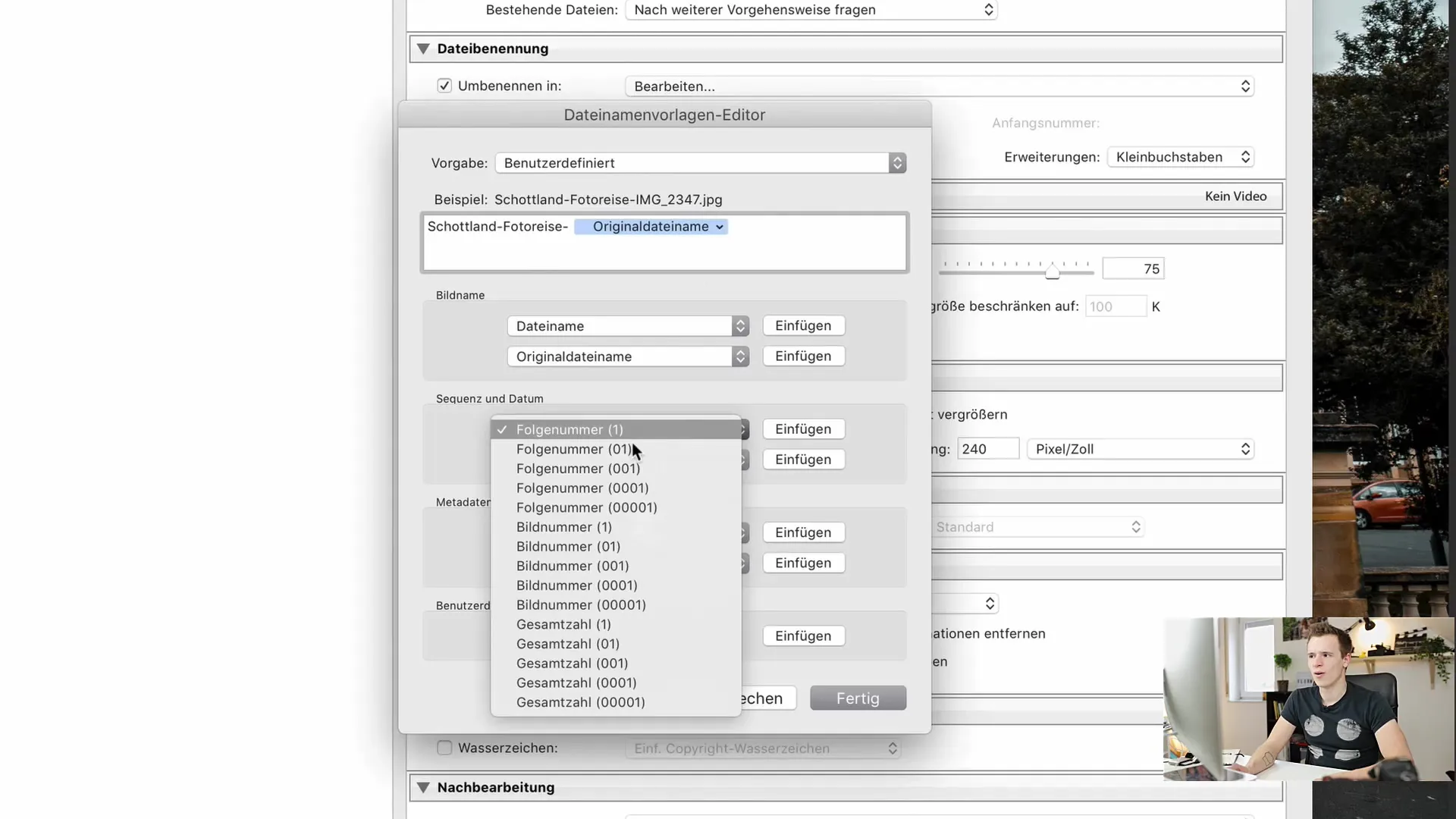
Another important point is the choice of file format. Lightroom allows you to choose between different formats like JPEG, TIFF, or the original DNG. For use in social media, JPEG is often the best choice.
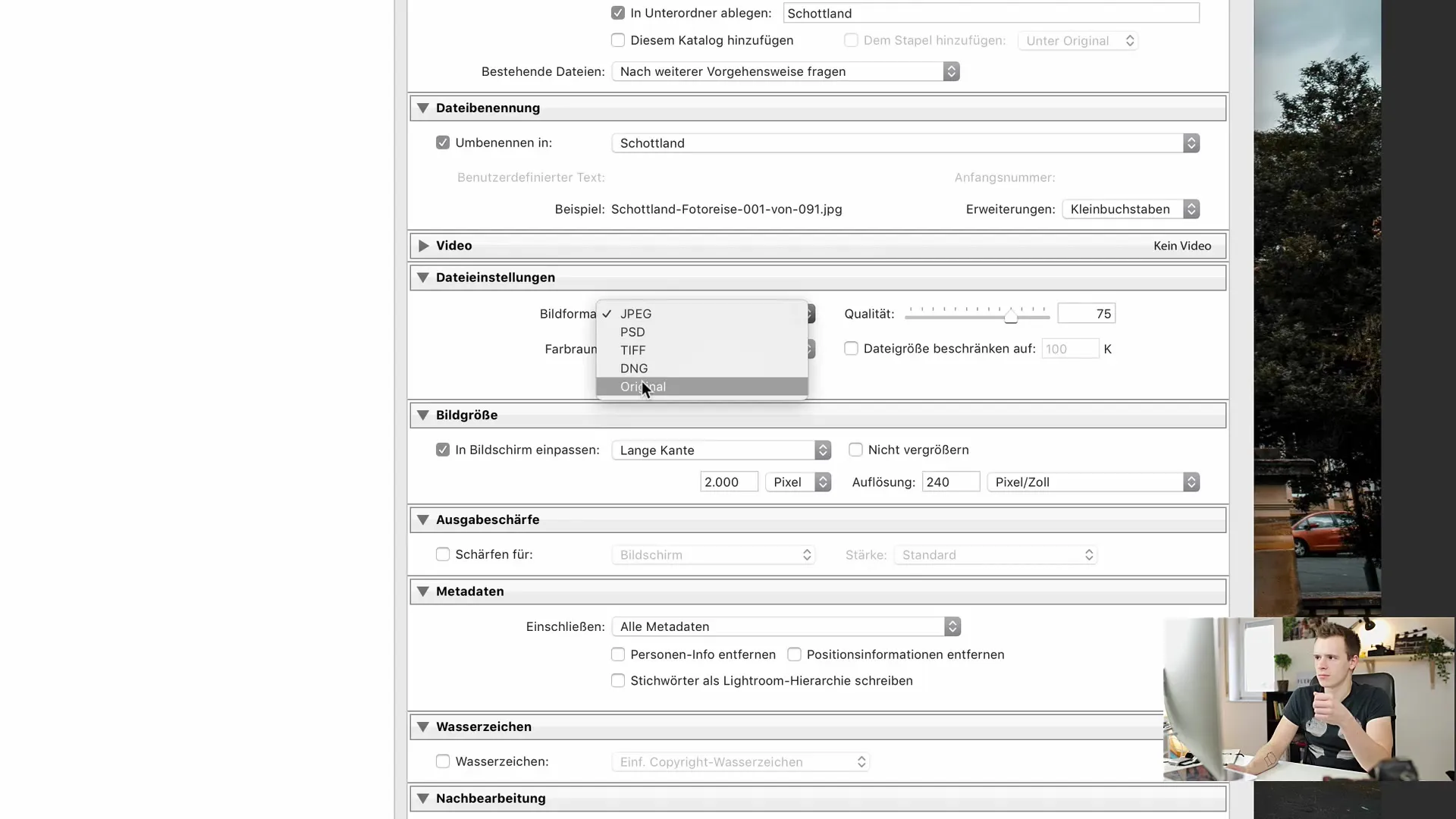
Also, pay attention to the quality settings of the exported images. A quality setting of 75 is a good starting point to find a balance between file size and image quality.
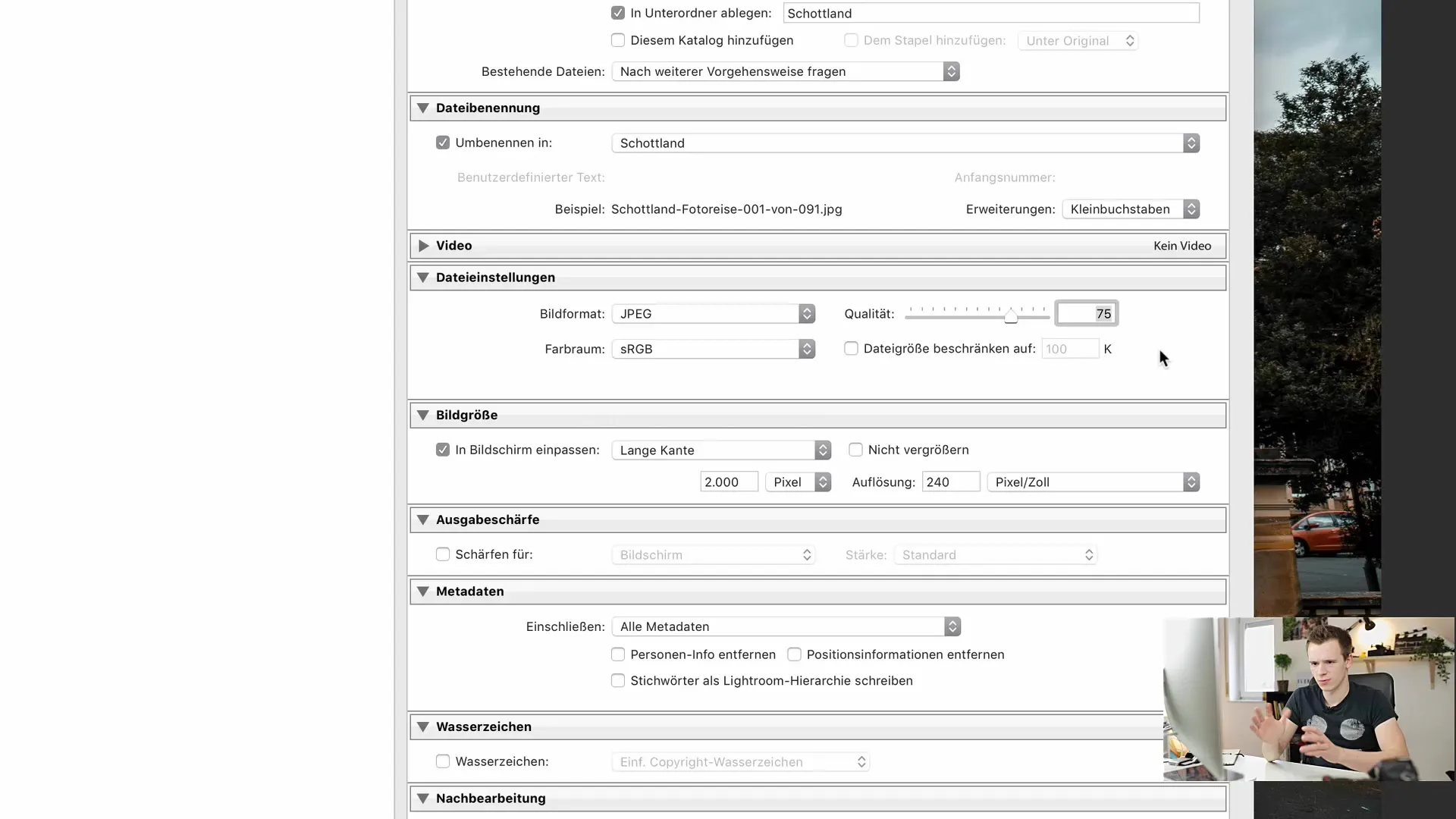
For image size, you can define the resolution. A common choice is to set the long edge to 2000 pixels. This ensures good image quality without making the file too large. Be sure not to select the "do not enlarge" option, as this can compromise your image quality.
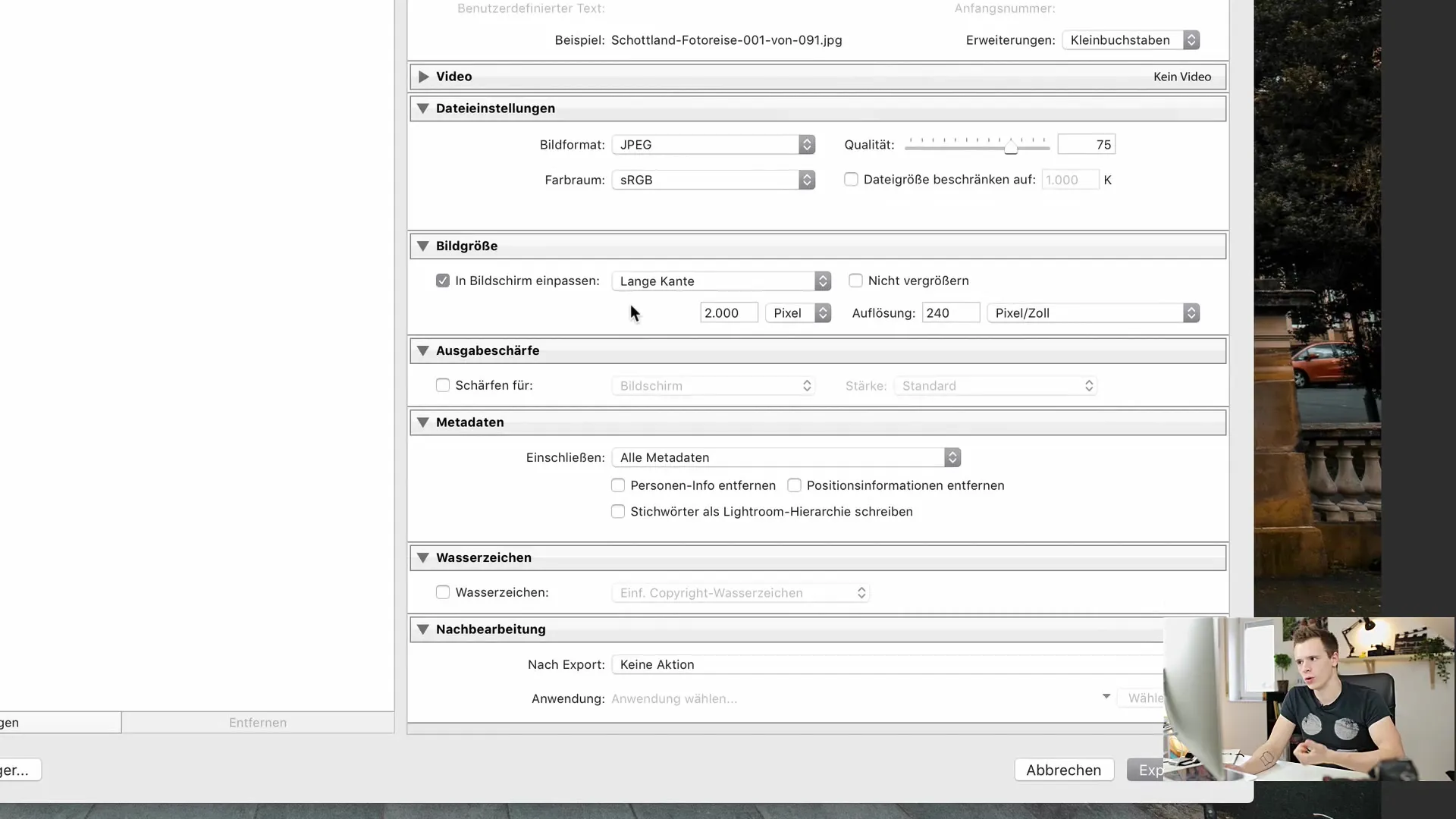
If you wish, you can also set sharpening for the image export. Lightroom offers various sharpening options depending on whether you are outputting the images for print or screen.
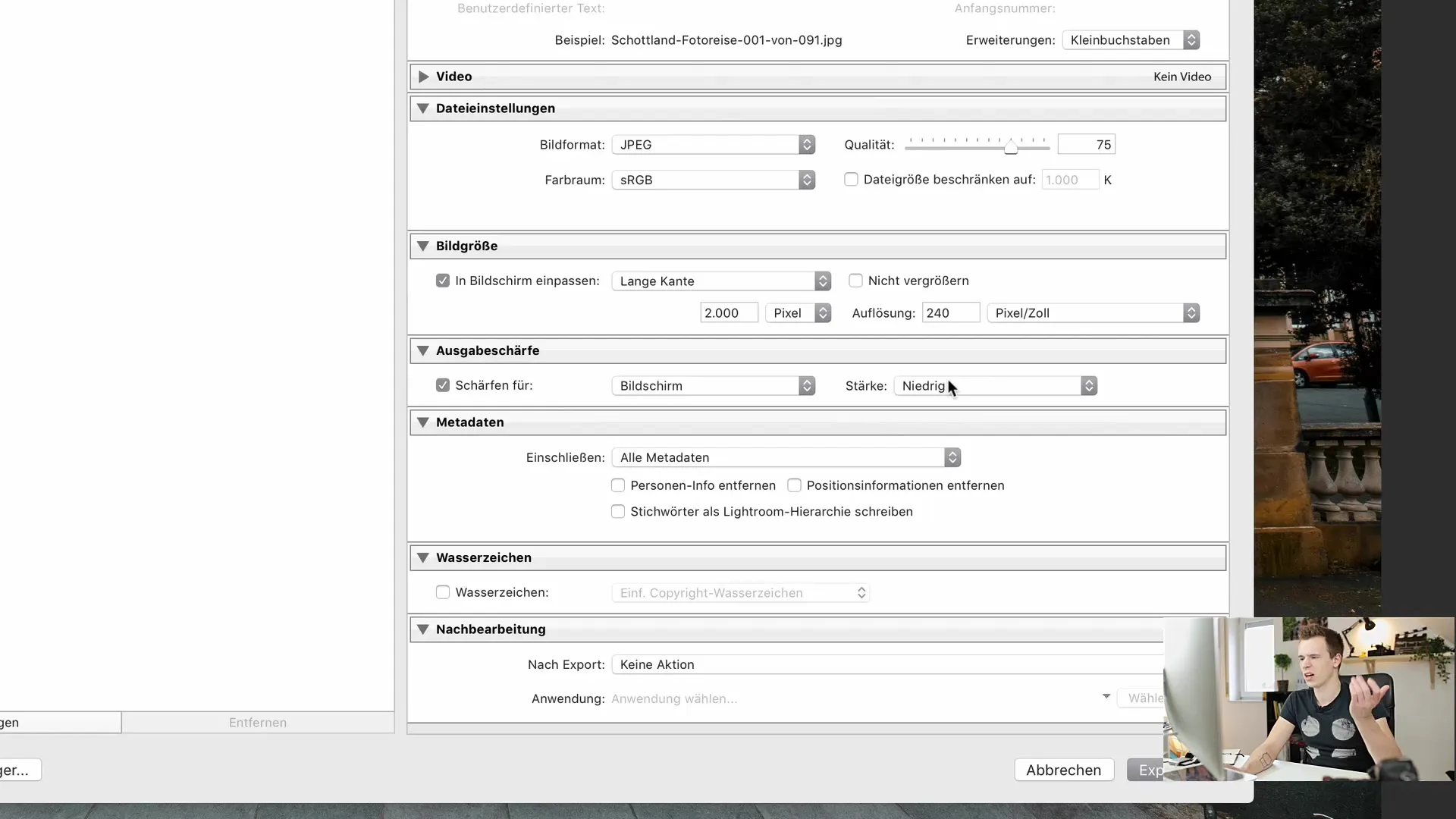
In addition to the options mentioned above, you can also add metadata that will be passed along with the exported images. You can specify all metadata or only selected ones, such as copyright information.
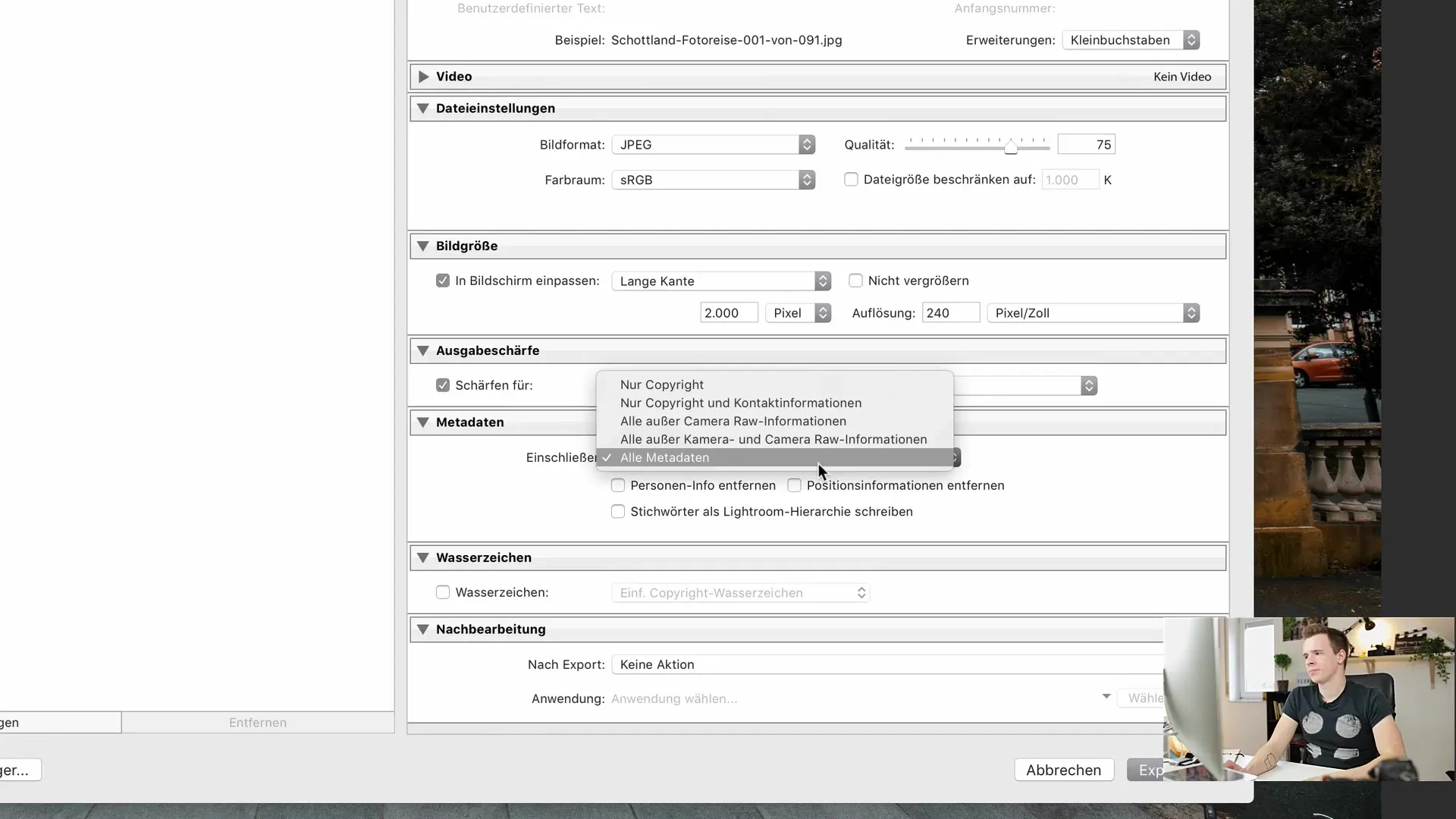
If watermarks are important to you, you can also add a text or graphic watermark here. This way you can ensure that your images are branded with your logo or name, no matter where they are published.
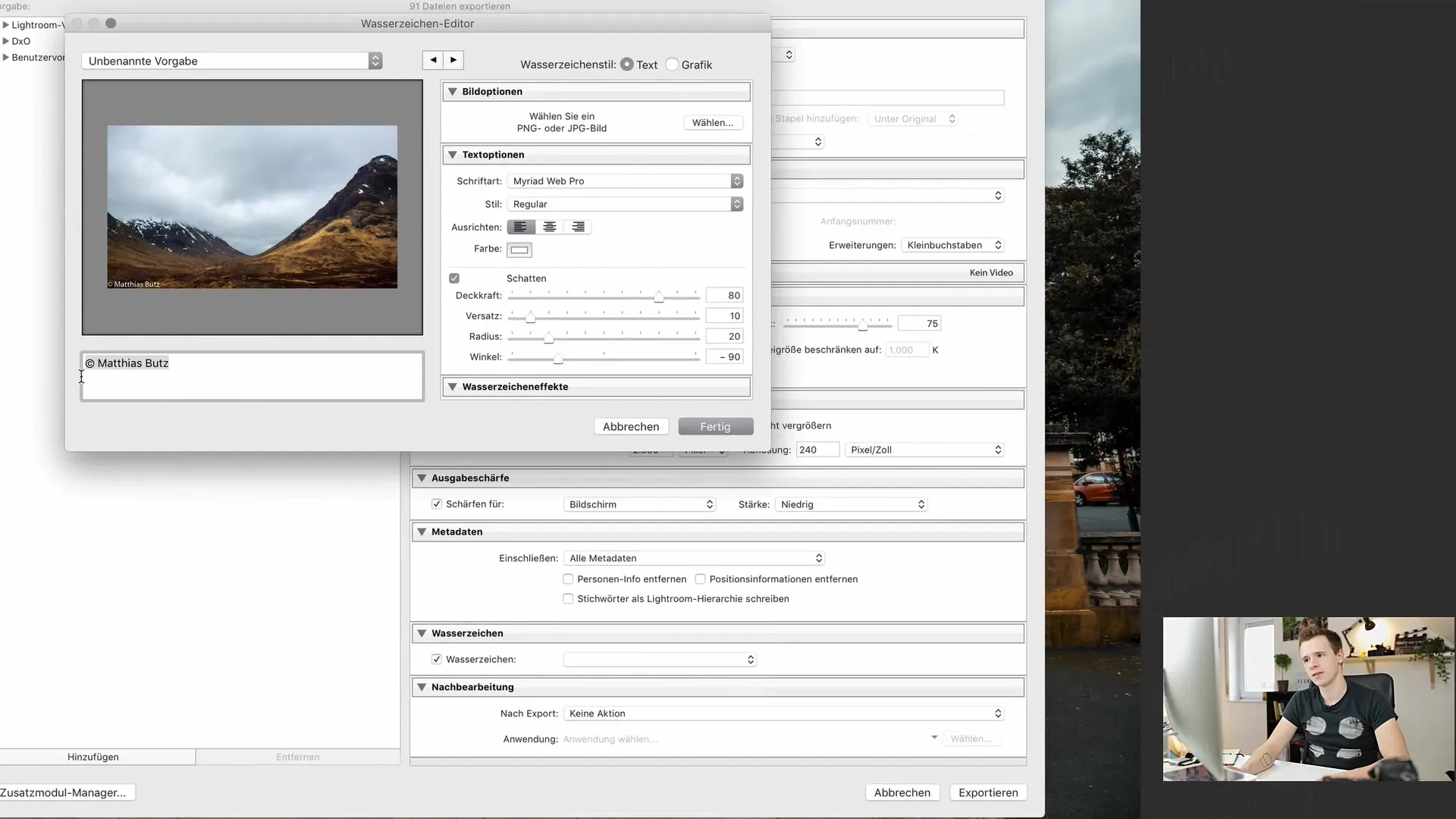
A particularly useful feature of Lightroom is the ability to save export presets. If you often use the same export options, it is efficient to create and save a preset.
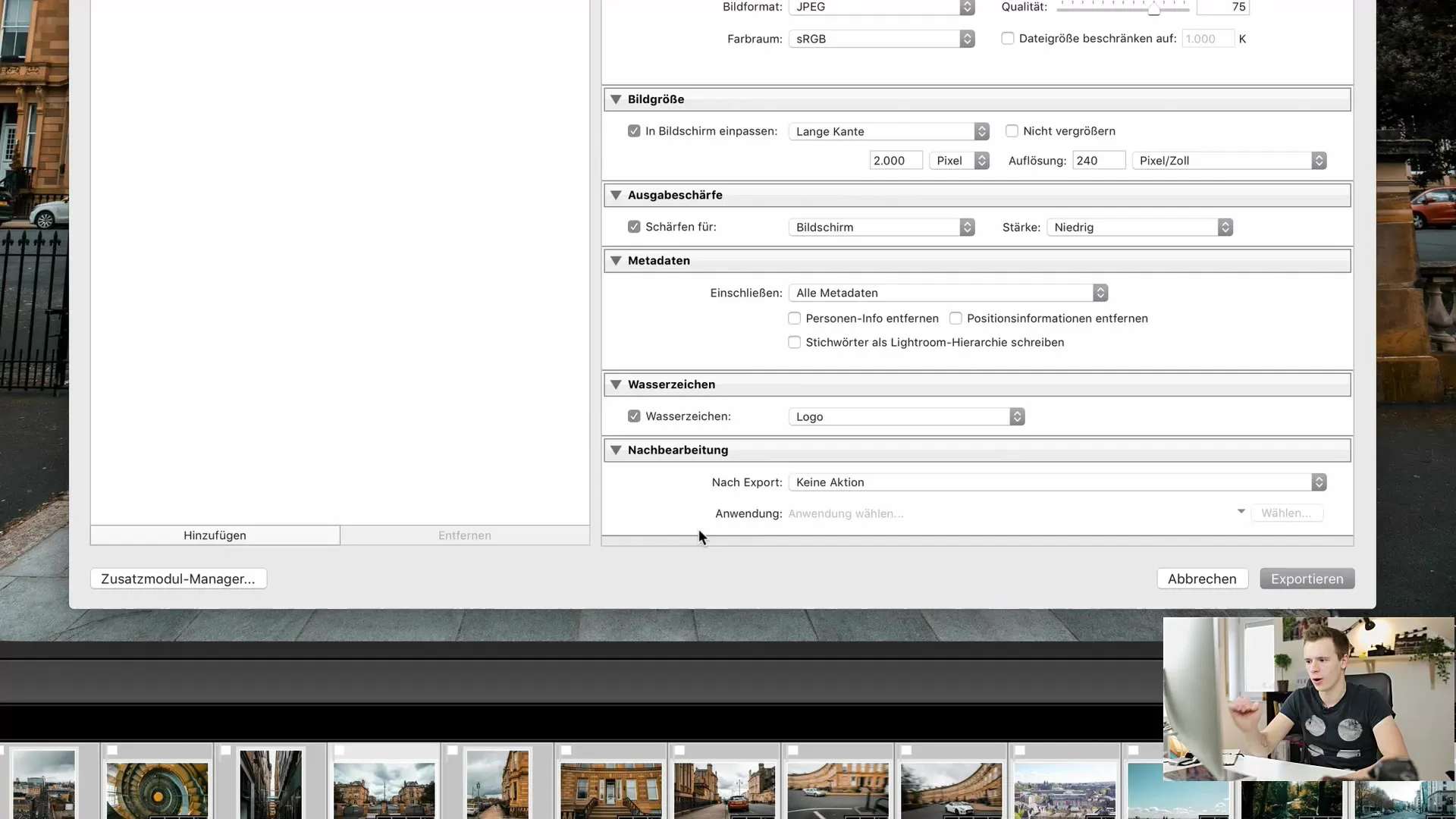
After you have made all the settings, click on "Export" to start the process. Lightroom will first search for the selected images and prepare the export. Depending on the number and size of the images, this process may take some time.
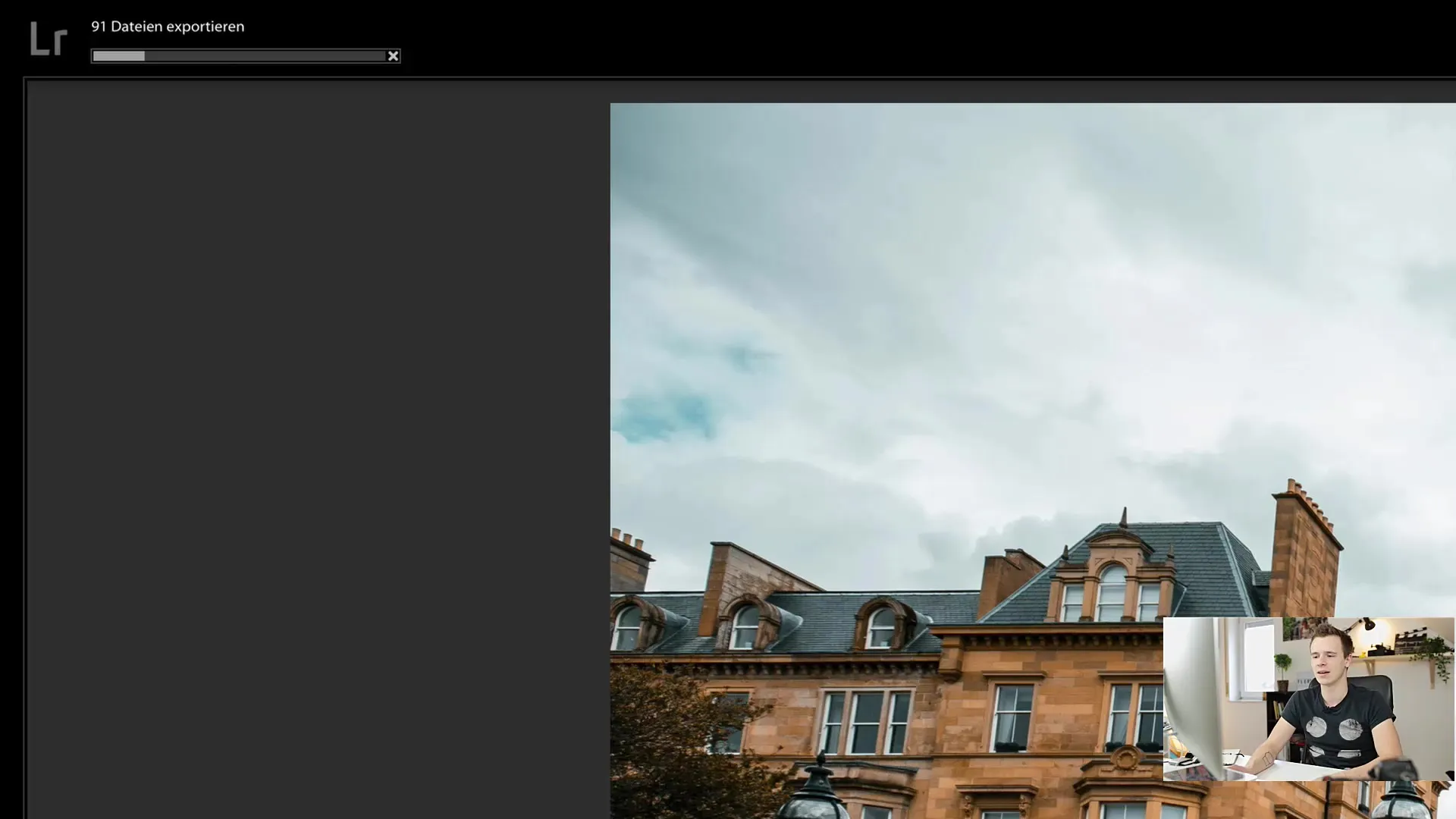
You can also use additional modules to upload images directly to social media platforms such as Facebook or Flickr. To do this, you need to add and authorize the corresponding modules.
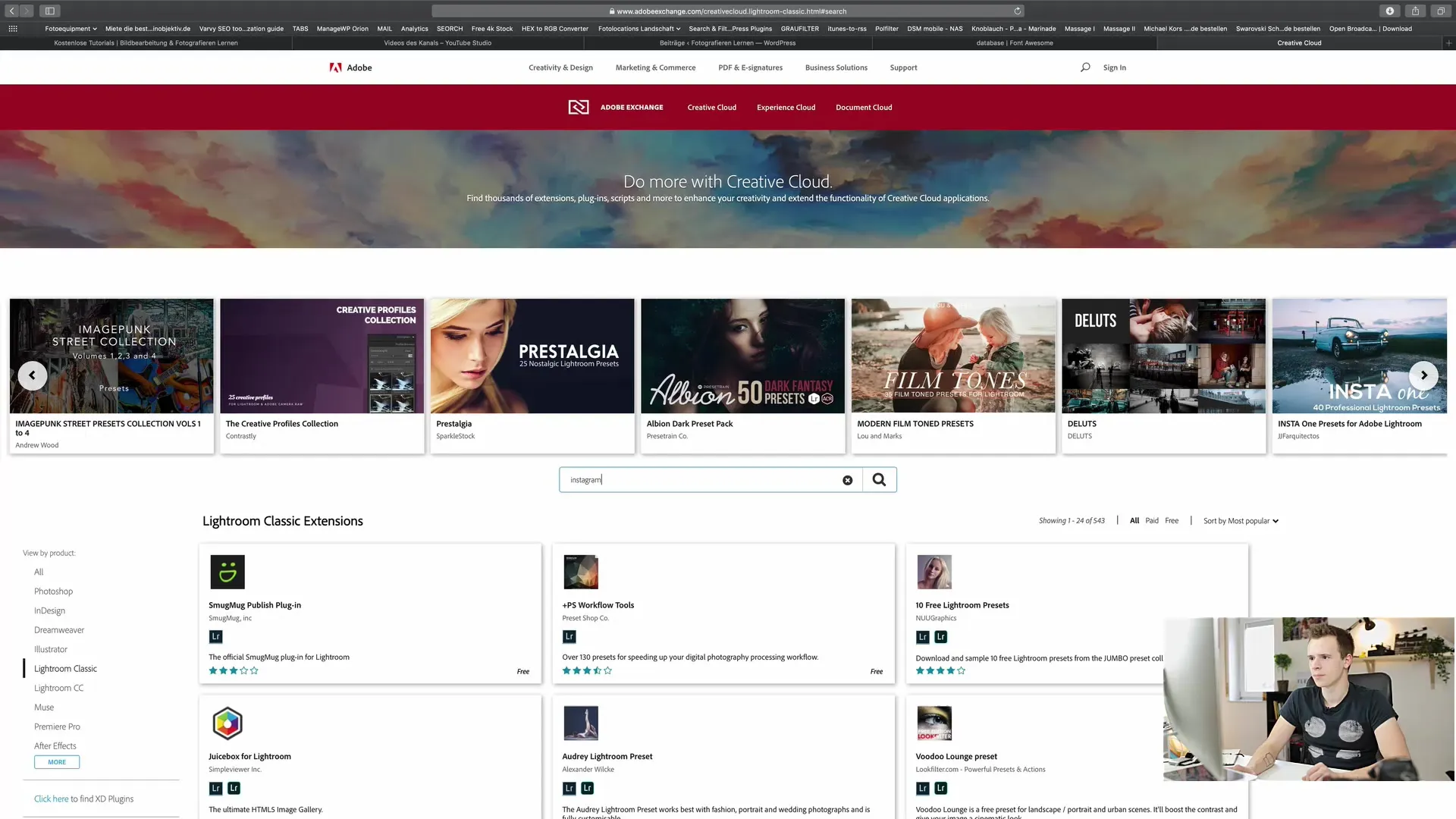
Summary
In this tutorial, you have learned how to export images from Lightroom Classic CC. You now know the key options and settings to prepare your images optimally for sending or publishing on social networks. Use this guide to ensure that your work is professionally presented.
Frequently Asked Questions
How do I export images from Lightroom?Select the image, right click and choose "Export".
In what format should I export my images for social media?JPEG is often the best choice for social media.
How can I adjust the image size when exporting?In the export dialog, you can adjust the long edge to a desired number of pixels.
Can I set custom file names for exported images?Yes, you can customize filenames with date, time, or other information.
What are export presets in Lightroom?Export presets are saved settings that help you perform future exports more quickly.


